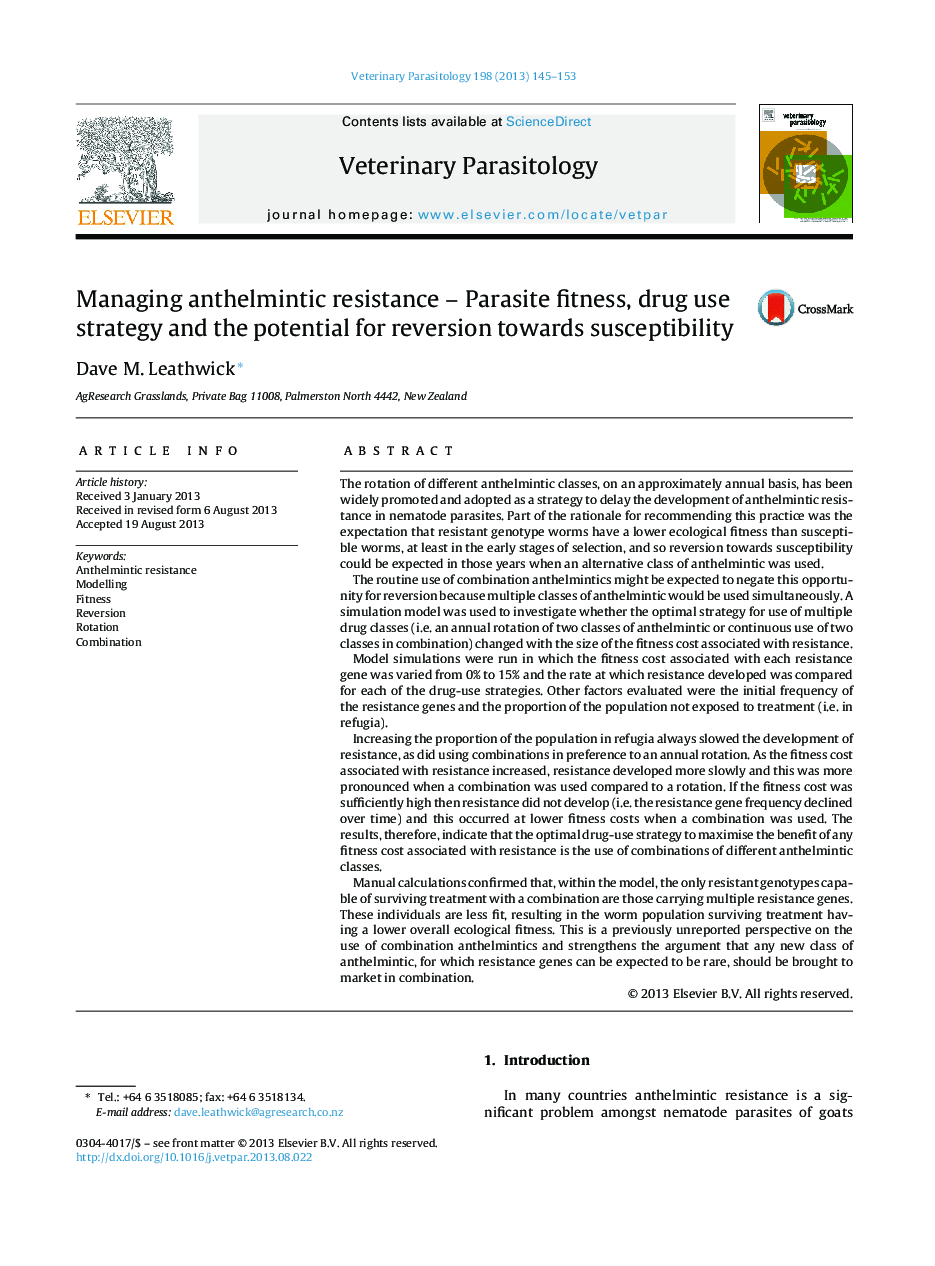| Article ID | Journal | Published Year | Pages | File Type |
|---|---|---|---|---|
| 5803904 | Veterinary Parasitology | 2013 | 9 Pages |
The rotation of different anthelmintic classes, on an approximately annual basis, has been widely promoted and adopted as a strategy to delay the development of anthelmintic resistance in nematode parasites. Part of the rationale for recommending this practice was the expectation that resistant genotype worms have a lower ecological fitness than susceptible worms, at least in the early stages of selection, and so reversion towards susceptibility could be expected in those years when an alternative class of anthelmintic was used.The routine use of combination anthelmintics might be expected to negate this opportunity for reversion because multiple classes of anthelmintic would be used simultaneously. A simulation model was used to investigate whether the optimal strategy for use of multiple drug classes (i.e. an annual rotation of two classes of anthelmintic or continuous use of two classes in combination) changed with the size of the fitness cost associated with resistance.Model simulations were run in which the fitness cost associated with each resistance gene was varied from 0% to 15% and the rate at which resistance developed was compared for each of the drug-use strategies. Other factors evaluated were the initial frequency of the resistance genes and the proportion of the population not exposed to treatment (i.e. in refugia).Increasing the proportion of the population in refugia always slowed the development of resistance, as did using combinations in preference to an annual rotation. As the fitness cost associated with resistance increased, resistance developed more slowly and this was more pronounced when a combination was used compared to a rotation. If the fitness cost was sufficiently high then resistance did not develop (i.e. the resistance gene frequency declined over time) and this occurred at lower fitness costs when a combination was used. The results, therefore, indicate that the optimal drug-use strategy to maximise the benefit of any fitness cost associated with resistance is the use of combinations of different anthelmintic classes.Manual calculations confirmed that, within the model, the only resistant genotypes capable of surviving treatment with a combination are those carrying multiple resistance genes. These individuals are less fit, resulting in the worm population surviving treatment having a lower overall ecological fitness. This is a previously unreported perspective on the use of combination anthelmintics and strengthens the argument that any new class of anthelmintic, for which resistance genes can be expected to be rare, should be brought to market in combination.
